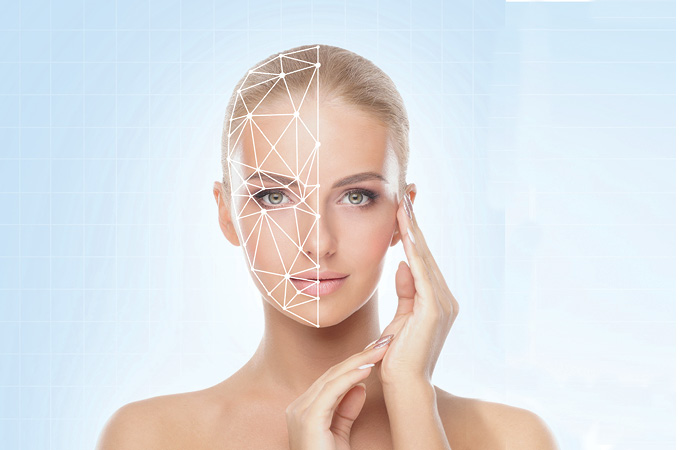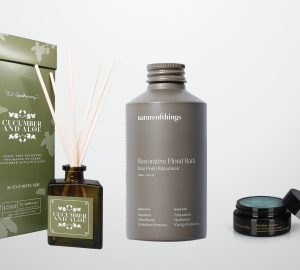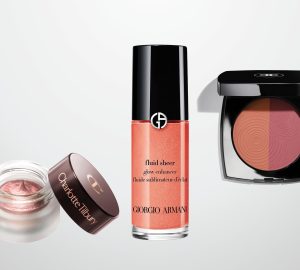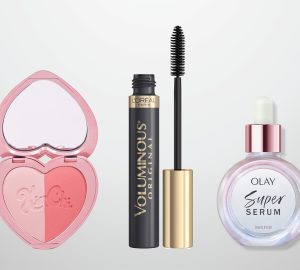Each year brings with it new ways to approach beauty, and T&S is sharing some of the latest advancements. From noninvasive procedures to wellness-focused ingredients, this year, people are seeking to both look and feel great. Here is what’s on the beauty horizon for 2019.
i can see your halo
“I’m seeing more and more patients looking for solutions to skin problems,” says Dr. Frank Simo, a SLUCare facial plastic and reconstructive surgeon. “They affect people of all ages, and everyone is looking for a way to maintain their skin.” He suggests Sciton’s HALO, a new hybrid fractional laser, as an option for improving skin with less hassle and downtime. It uses both non-ablative and ablative wavelengths to treat fine lines and pigmentation problems. Simo says the results are close to what can be achieved with deeper laser treatments but without the discomfort or side effects associated with resurfacing. “Patients feel more comfortable after the treatment, and there is no red skin discoloration,” he says. “There is a slight bronzing effect for about a week, and women can be back in makeup the day after.”
The procedure is done in-office and takes about 45 minutes, according to Simo. “For wrinkles and fine lines, you can see the results immediately,” he notes, adding that it takes longer to notice improvements with skin discoloration. HALO is not effective for treating severe damage, but mild problems can be addressed with one session. For moderate damage, Simo says correcting the issue may take two to three sessions. He notes that the procedure is popular across all age ranges and can be combined with other treatments like skin peels to maximize results.
the 411 on CBD
The way the world looks at cannabis is changing. Gone is the classic grungy stoner image, and in its place is one of luxury wellness and beauty. This is thanks in part to cannabidiol (CBD), a safe, non-addictive compound that has been studied for its therapeutic benefits. CBD is one of the biggest trends in beauty right now. But what exactly does this buzzy ingredient do?
how does CBD work?
CBD is a phytocannabinoid, a molecule found in cannabis. Our bodies produce similar chemicals known as endocannabinoids, which play a role in regulating several physiological processes. While its effects are still being studied, CBD mimics these naturally occurring compounds and is thought to have an anti-inflammatory impact.
why is it in beauty products?
Its main appeal is the anti-inflammatory effect, and it also contains vitamins A, D, and E and essential fatty acids. Research has found evidence that CBD can treat a variety of skin conditions, including dryness, psoriasis and eczema. A 2014 study also found it can regulate oil production in the sebaceous glands, meaning it may be an effective treatment for acne, too.
what types of beauty products use it?
It’s commonly found in face oils and serums, but you also can get CBD-infused body creams, soaps, face masks and cleansers.
do any of these cause a high?
No, CBD has no psychoactive effects. The phytocannabinoid responsible for marijuana’s high is tetrahydrocannabinol, better known as THC.
Sources: Allure, Project CBD
so stimulating
The face naturally loses volume as we age, but now, the body can restore collagen with a little help from Sculptra. The injectable, aesthetic biostimulator is used to restore facial volume and treat saggy skin. “People tend to think of it as a facial filler, but it’s very different,” says Carol Anderson, RN, CANS, owner of Nouveau, a Boutique MedSpa. “It activates the fibroblasts, cells responsible for producing collagen, and helps the body correct the problem itself.” She explains that as we age, the rate of cell turnover decreases, and the treatment helps stimulate the process. Unlike a filler, which remains in the body, Sculptra is completely gone after three weeks.
“You won’t get immediate gratification, but you will end up with a beautiful, natural look,” Anderson says, noting that people generally start to see changes three to four weeks after the injection, and results can last up to two years. Plus, Sculptra requires no downtime. There may be some bruising around the injection site, but there is no swelling or redness. Sun damage destroys collagen, so those who have it done need to wear sunscreen and limit their sun exposure to maximize results. The number of treatments required depends on the individual’s age and the level of damage. Anderson says that for loss of volume, it usually takes a series of treatments spaced four to six weeks apart. “The general rule of thumb is one session for each decade of life,” she explains. “For fine lines, one treatment may be sufficient.”
the back of the bottle
What we put on our bodies is just as important as what goes in them. Lori Holtzman, a representative for the cosmetic brand Beautycounter, says it can be shocking to learn just how little regulation goes into grooming products. “The Food and Drug Administration has very little control over personal care items, and it currently doesn’t even have the power to recall a product,” she explains. “There are only 30 ingredients banned in the U.S., while Canada bans around 600 and Europe close to 1,500.” The Personal Care Products Safety Act is a step toward more regulation. If passed, the bipartisan bill mandates five ingredients be tested for human safety every year.
Holtzman suggests carefully vetting your products, and that goes beyond looking for ‘natural’ or ‘green’ labels. “Those terms aren’t regulated, and just because a product contains natural botanicals doesn’t mean it doesn’t also contain potentially hazardous chemicals,” she says. “Look for companies that are transparent with what they include in their products.” She adds that Beautycounter publishes a list of the ingredients it never uses, and other companies take similar steps. If you want to know about a product you currently use, she suggests checking the Environmental Working Group’s Skin Deep Cosmetics Database. The website, ewg.org, collects information on different products and gives them a safety rating.
ingredients to watch out for:
Parabens
Phthalates
Polyethylene glycol (PEG)
Formaldehyde
Sodium lauryl sulfate (SLS)
• Fragrance: Beauty brands can hide up to 100 ingredients behind this simple word. Look for products that clearly list the source of the scent, like vanilla, orange or essential oils.
• Oxybenzone and octinoxate: Hawaii has banned these two common sunscreen ingredients for their damage to coral reefs.
things just got personal(ized)
Beauty is heading to Silicon Valley. The future is about customization, and that means personal care companies are partnering with the wizards of the tech world to create hyper-personalized options. By the end of 2019, Neutrogena will release MaskID, a product that uses your phone to create a 3-D model of your face and prints a sheet mask that fits perfectly. The 360 Skin Scanner, an iPhone attachment that uses sensors to monitor moisture levels, wrinkles and pore size, allows the ingredients used in the mask to also be customized to address your specific needs. And that’s just what one company is doing; there are many other areas of exciting advancement.
DNA testing
Along with revealing your ancestry, swabbing the inside of your cheek also can tell you how your skin will age and what you can do to turn back the clock. Companies like HomeDNA and Skintelli are using genetic analysis to make skin care recommendations, and pharmaceutical companies can use the information to develop new topical treatments based on your genetics.
3-D printing
In January, the Opté Precision Skin System was unveiled in Las Vegas at the CES convention, an annual trade show for new technology. The handheld device scans your face to identify age spots, pimples and other blemishes and then applies the perfect amount of foundation to cover them. This could lead to more customized, 3-D printed makeup, although it is still impossible for materials more viscous than milk to pass through the machines.
Source: Allure
made for men
According to Dr. Richard Moore of The Lifestyle Center and The Edge for Men, cosmetic procedures for men are on the rise. He says that while dermal fillers, hormone replacement and hair restoration are popular, noninvasive body sculpting is trending as well. “There have been a lot of advances in technology, and more men are working to keep a youthful build into their 40s and beyond,” he notes.
One option is Vanquish ME, a nonsurgical procedure that uses radiofrequency energy to destroy fat. “Heating the tissue programs cell death and destroys about 30 to 35 percent of fat cells in the area,” Moore says. One session can cover a large area, like the abdomen or full upper back, and takes less than an hour. A full course of treatment is done in four appointments over four weeks. Moore adds that there is no downtime, and patients can resume normal activities immediately.
For men who also want to build muscle, Moore suggests Emsculpt. “The device uses high-intensity focused electromagnetic energy to stimulate nerves and contract muscles,” he explains. “It induces approximately 20,000 supramaximal muscle contractions in a session.” The process also destroys fat, yielding a more toned body. Emsculpt is done in a series of four treatments and can be used simultaneously with Vanquish ME for even more pronounced effects. There is no downtime, but Moore notes you may have mild muscle soreness comparable to that experienced after a workout.








